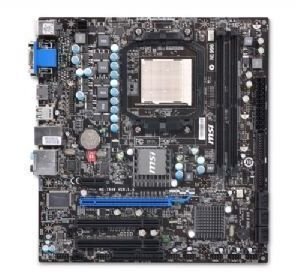What Is a Motherboard Utility? How to Find Out What Motherboard Is in Your Computer
When a user decides it is time to upgrade from their current computer to a newer model, trying to decide which is better can be a difficult and frustrating aspect, especially when you aren’t sure where to look. There are several ways to go about discovering how a new system matches up with your current one.
In this article, we’ll go over motherboard utility programs that help to identify what kind of motherboard you have in your computer. Some utilities will tell you the name brand, the speed, the version date, and even the types of processor or memory that the motherboard currently uses.
What is a Motherboard Utility?
Motherboard utilites are software programs that you can download and install for your motherboard. These utilities include programs that help identify the name and type of motherboard, give information about the motherboard, and even utilities that allow a user to keep watch on a motherboard.
These types of software are very good investments for users; for example, say a user wishes to upgrade his current system, but doesn’t know what type of motherboard he has. By using a motherboard identifier utility, the program gives the user information about the name of the BIOS (or basic input/output system), and the kind of CPU (or processor) that the motherboard is using Some will even identify the type of socket (basically, the type of processor) that the motherboard can use. This is important information as it helps a user know which components he or she needs if replacing the processor or if upgrading a computer; knowing what they have helps in making sure they get the fastest items on the market.
Types of Motherboard Utility
As mentioned, there are several types of motherboard utilities. Motherboard identifiers, such as CPU-Z, give the user a lot of information in regards to learning what kind of motherboard they have. Again, this is helpful in the purchase of a new motherboard or computer, especially if the current machine may not have been purchased by the current user.
Many motherboard manufacturer’s also have their own type of motherboard utility software. This type of software is usually to help assist people in upgrading their BIOS, especially when they may not have the know how, the equipment, or the patience for doing the standard BIOS update. These motherboard utilities also give out information about the motherboard; usually the version number and last update date, as well as the type of chipset (such a onboard components). Because each motherboard is different, its important to check the manufacturer’s website to see what type of motherboard utilities are on site.
Last but not least are those types of motherboard utilities that help in diagnostics. These types of software help a user diagnose an issue that may be happening with the motherboard itself. For example, if a CPU is constantly hot (as in ‘running hot’), a diagnostic tool may send instructions for the CPU to only handle so much at a certain time of day or only run for a certain program. Programs that ‘overclock’ the motherboard - that is, changes the settings to increase speed - are also a part of this type of utility.
The good thing about many of these utilities is that they are mostly all free to download and use within your system (certain diagnostic tools may require purchase). The best way of finding those for your motherboard is try visiting the forums for your motherboard’s website. Often times, users will have the same type of motherboard and can give hints and tips on some of the utilities they may have used.
Image credit @ Tiger Direct.com
